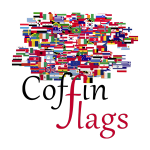Description
 Yemen sometimes called Yaman, officially the Republic of Yemen, is a country at the southern end of the Arabian Peninsula in Western Asia. It is the second-largest Arab sovereign state in the peninsula, occupying 527,970 square kilometres (203,850 square miles). The coastline stretches for about 2,000 kilometres (1,200 miles). It is bordered by Saudi Arabia to the north, the Red Sea to the west, the Gulf of Aden and Guardafui Channel to the south, and the Arabian Sea and Oman to the east. Yemen’s territory encompasses more than 200 islands, including Socotra, one of the largest islands in the Middle East. Yemen is a member of the Arab League, United Nations, Non-Aligned Movement and the Organisation of Islamic Cooperation. Yemen’s constitutionally stated capital is the city of Sana’a.
Yemen sometimes called Yaman, officially the Republic of Yemen, is a country at the southern end of the Arabian Peninsula in Western Asia. It is the second-largest Arab sovereign state in the peninsula, occupying 527,970 square kilometres (203,850 square miles). The coastline stretches for about 2,000 kilometres (1,200 miles). It is bordered by Saudi Arabia to the north, the Red Sea to the west, the Gulf of Aden and Guardafui Channel to the south, and the Arabian Sea and Oman to the east. Yemen’s territory encompasses more than 200 islands, including Socotra, one of the largest islands in the Middle East. Yemen is a member of the Arab League, United Nations, Non-Aligned Movement and the Organisation of Islamic Cooperation. Yemen’s constitutionally stated capital is the city of Sana’a.
The Flag of Yemen was adopted on May 22, 1990, the day that North Yemen and South Yemen were unified. The flag is essentially the Arab Liberation Flag of 1952, introduced after the Egyptian Revolution of 1952 in which Arab nationalism was a dominant theme. The Arab Liberation Flag served as the inspiration for the flags of both North and South Yemen prior to unification, as well as for the current flags of Egypt, Iraq, Sudan, and Syria. According to the official description, the red stands for unity and the bloodshed of martyrs, the white for a bright future, and the black for the supposed dark past. The flag’s design is also similar to that of the flag of the German Empire, albeit inverted. The flag is identical to the flag of Libya from 1969–1972.







